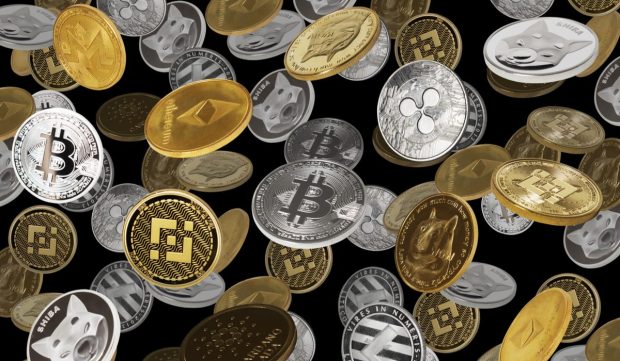Crypto Might Not Be Savior Developing World’s Looking For. Here’s Why

Bitcoin, stablecoins and other cryptocurrencies are a potential savior for people in developing nations who are trying to dig a little bit further out of poverty or into the middle class.
Just ask any crypto advocate.
Digital assets are easy to use, don’t require a bank account, and come with much, much lower fees than what traditional financial institutions (FIs) charge — particularly when sending money across borders, which tends to cost $7 to $14 or even more for a $200 remittance transfer.
And while there are some problems — notably high price volatility on a day-to-day basis and the lack of merchants who will take crypto as payment — the stock answer is that volatility beats rampant inflation, and that as demand increases, merchant will start taking it.
That’s the thinking behind El Salvador’s experiment with bitcoin as legal tender, and to be fair, it’s showing signs of coming true in Venezuela, where the currency and economy are collapsing under a repressive regime with a tenuous grasp on basic economic tenets like “just printing money is bad.”
See also: El Salvador’s Adoption of Bitcoin as Legal Tender Addressed in Congressional ACES Act
But what’s the reality?
For skeptics, one answer — summed up by Harvard lecturer, cryptographer and computer security expert Bruce Schneier in a Wednesday (June 1) interview with the Financial Times (FT) — is that “any system where you forget your password and you lose your life savings is not a safe system.”
The same thing applies to a financial product prone to doubling and halving its price in the space of a few months — something bitcoin did twice in 2021.
For a better answer, look at crypto through a more analytical lens like the friction-inertia-time framework described in the link below.
Read more: How to Drive Success in a Digital 3.0 World
Friction
Start with friction. Does crypto make it easier or harder to receive, save and spend money on daily necessities? The main goal of bitcoin’s creator was to create a peer-to-peer (P2P) digital currency that bypassed banks, after all.
One good example comes from El Salvador, where the government has done everything in its power to make bitcoin a day-to-day currency — made it not just legal but mandatory for merchants to accept, created a single digital wallet usable and compatible throughout the country, and even given away $30 worth of bitcoin to jumpstart spending.
Yet, by any realistic measure, it’s failing. Only a small percentage of merchants providing goods and services actually accept it, and most of those are big enough that they have to avoid government scrutiny.
See more: El Salvador’s Bitcoin-as-Currency Experiment Is Costly and Failing
And citizens are voting with their feet. According to the National Bureau of Economic Research (NBER), which is tracking the experiment, the state-issued Chivo wallet had almost no new adopters in the first three months of 2022, and no more than 20% used it after getting the initial $30 incentive. Equally, only 20% of merchants accept it, and only 5% of sales are in bitcoin. More damning, less than 2% of remittances — where the potential cost savings are greatest — are now in bitcoin rather than fee-laden dollars.
On the government’s side, the friction is enormous. The costs have been estimated at 1% of gross domestic product (GDP), and the International Monetary Fund (IMF) is refusing a loan that could help the government avoid a sovereign debt default.
Read more: Bitcoin’s Still a Major Sticking Point in El Salvador’s Talks with IMF
The adoption is broader in Venezuela, but you’re talking about a country where the paper currency needed to buy bread has a larger volume than the bread itself. Desperation overcomes a lot of friction.
Inertia
The claim is that crypto can make transactions easier, faster and cheaper. And that’s true, when the infrastructure is in place.
But signing up for crypto payments is far from simple. Aside from having to understand what crypto is and how it works — like using a digital wallet, which can be far more complex if you can’t use something like PayPal — people need a mobile phone to hold that wallet. Only two-thirds of Salvadorans — who are comparatively well off compared to many developing countries — have one, and the percentage is far lower in elsewhere.
Then there’s turning it into usable local currency. An “off-ramp” generally means a bank or money service provider — which comes with the costs crypto is supposed to bypass — or crypto ATMs. And while El Salvador’s president has overseen the installation of a fairly large number, the overwhelming majority are in the U.S., with few countries having more than dozens.
Time
A third part of the usability framework is time — how much time does it save? Well, not a lot if you must struggle to find merchants to accept crypto or places to turn it into spendable currency.
Then there’s also risk. How badly does your currency have to be doing to make 5% to 10% price fluctuations in a day worth it? That’s to say nothing of gambling that an emergency will come up when the price of the crypto has doubled rather than crashed 50%.
Although stablecoins avoid the price fluctuations, the recent collapse of the TerraUSD stablecoin in May, which destroyed $45 billion in value, suggests there’s other safety concerns other than losing a password.
And while it’s getting easier to spend crypto in the U.S., thanks to things like crypto-backed debit cards and growing merchant acceptance, it still has a way to go here. In less developed countries, it’s far more difficult still.
